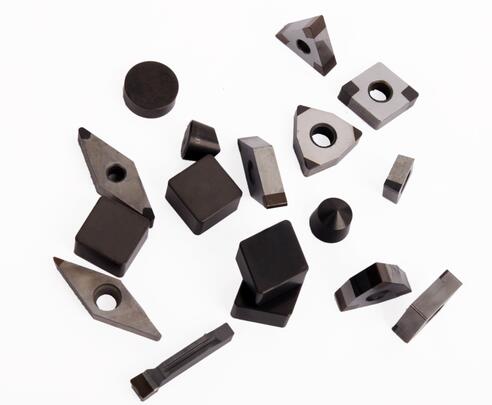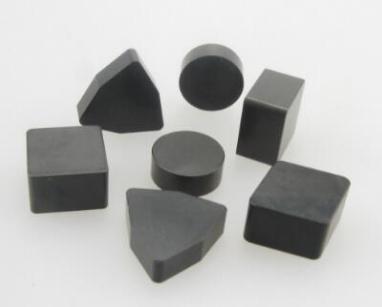1) Advantage of CBN Inserts
With the characteristics of high hardness, high cutting force and cutting temperature, turning tools are required to have good heat resistance and wear resistance when turning hardened steel. The microhardness of PCBN single crystal is HV8000~9000, which is currently known as the second highest material in terms of hardness. The hardness of PCBN is generally HV3000~5000, and the heat resistance temperature of PCBN can reach 1400~1500℃, which is the first choice for turning hardened steel.
Then CBN cutting tools have high oxidation resistance, no oxidation phenomenon occurs at 1000 ℃, and no chemical reaction occurs with iron-based materials at 1200 to 1300 ℃. It has good thermal conductivity and low coefficient of friction, which are just the requirements for turning hardened steel. No oxidation occurs when turning hardened steel, maintaining the excellent cutting performance of PCBN tools. At the same time, CBN inserts can turn hardened steel at high speed, and the heat is taken away by iron filings to avoid burning the workpiece.

2) The effect of large margin for turning hardened steel with CBN inserts
CBN inserts could only be used for finishing processes in the early time. With the continuous research and development of the domestic superhard material industry, this problem has been solved. The domestic superhard tool enterprises represented by Halnn have already developed the overall polycrystalline CBN inserts, which can be turned and hardened with a large margin. hardened steel, high-hardness cast iron and other ferrous metals, such as Halnn BN-S20 are now maturely used in hardened steel bearings, ball screws and other industries. The cutting allowance is easily solved by 1-10mm, and the tool life is dozens of times that of carbide tools.

3) The effect of intermittent cutting of hardened steel with CBN inserts
Another reason why CBN inserts were not widely promoted at the beginning was that they were brittle and easy to break. The price and the production cost was high. Now CBN inserts have been widely used in various industries, and the problem of brittleness has been well solved. For example, Halnn BN-H10 and BN-H21 grades are two types mainly developed for intermittent cutting conditions. The cutting tools are used in medium and heavy intermittent working conditions. They will not chip or burn during the cutting process, especially for hardened steel with hardness above HRC50, the effect is better, and it is deeply trusted by customers.
4) Surface roughness can be obtained by turning hardened steel with CBN inserts
With higher hardness, the surface roughness of the machined workpiece will be smaller. Therefore, when the PCBN inserts is turning hardened steel, the surface roughness can easily reach Ra0.8, and the CBN tool can easily reach Ra0.8 due to its high hardness and high wear resistance. It is also very suitable for turning high-hardness steel parts. After years of research and development, Halnn BN-H05 brand CBN tool can obtain surface roughness within Ra0.4 and achieve high dimensional accuracy when turning hardened steel.

5) Summary
(1) PCBN inserts are currently the ideal turning tools for hardened steel, especially for hardened steel above HRC50, which has advantages. For soft materials, carbide tools are recommended.
(2) When turning hardened steel with welded PCBN inserts, the cutting allowance should be controlled within 0.5mm. For cutting allowances greater than 1mm, it is recommended to choose solid polycrystalline CBN inserts.
(3) For intermittent cutting hardened steel, choose BN-H10 and BN-H21 grades, and for continuous cutting, choose BN-H05 grades.
(4) When turning hardened steel with CBN tools, dry cutting or air cooling is generally used. If cutting fluid must be added, water-based cutting fluid should be selected, and continuous addition can not be interrupted.
WhatsApp:8613271562251
Email:service@halnn-group.com
Address:R & D 5B, National University Science and Technology Park, National University, Changchun Road, Zhengzhou High-tech Zone